More than 6,000 kilometers separate Chile from Cuba, but in the second half of the nineteenth century they were closer than ever.
So close that when Cuba took up arms against Spain it adopted a flag almost identical to that of Chile, only with the red and blue colors reversed.
- Maduro arrives surprisingly in Cuba to commemorate 5 years of the death of Fidel Castro
- Physical and sexual violence and drug addiction: Mavys Álvarez recounts her ordeal with Maradona in Cuba
- Cuba inaugurates cultural center to perpetuate thought of Fidel Castro
It is a “curious and little known” proximity, historians say.
We are in 1865 and Chile is at war against Spain.
So the Chilean government rules in a confidential mission to the United States to one of his most important diplomats of the moment.
The objective? To destabilize Spain, to hit it where it hurts the most, and to encourage an armed uprising in Cuba against the crown.
“The influence of Chile in the independence of Cuba is a matter studied but little known by the general public in Cuba and probably even less in Chile ”, Óscar Zanetti, doctor of historical sciences from the Academy of History of Cuba, tells BBC Mundo.
Spanish-South American War
The Chinchas Islands are located 21 kilometers off the coast of Peru and the total area does not even reach a square kilometer.
And although these proportions may seem minuscule, they were enough to give rise to a war that faced Chile, Peru, Bolivia and Ecuador against Spain between 1865 and 1866 and that left around 600 dead.
It all started in 1864, when a Spanish fleet supposedly for scientific purposes occupied these islands, key in the guano trade for Peru.
During the American Civil War (1861-1865), European powers such as France and Spain took advantage to re-meddle in Latin American affairs”, contextualizes for BBC Mundo Sergio Guerra Vilaboy.
“In the case of France, the intervention in Mexico took place, originating the empire of Maximiliano and Spain recovered its colony of Santo Domingo and tried to seize the Chinchas”, Guerra completes.
For Peru, Chile, Bolivia and Ecuador, this maneuver was seen as a threat to the independence of these new republics that barely 50 years earlier they had freed themselves from the Spanish Crown.
Chile and Peru actively fought Spain after signing the Treaty of Defensive and Offensive Alliance on December 5, 1865 in Lima.
Ecuador and Bolivia, although they did not carry out military operations, politically supported their Pacific neighbors.
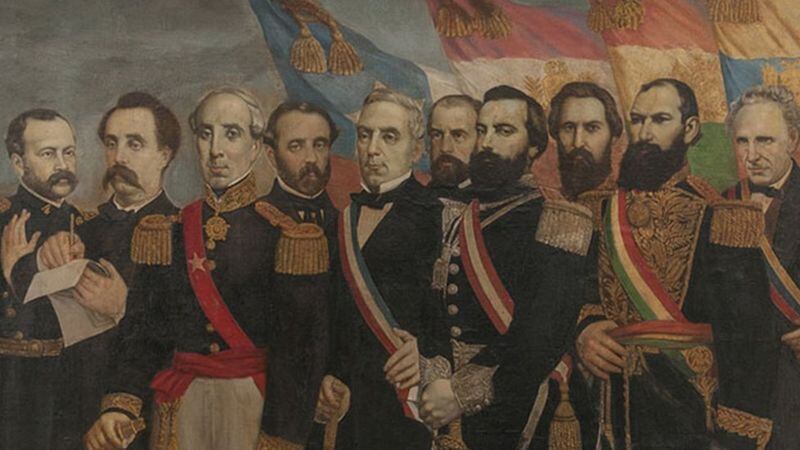
As this conflict unfolded, far away in the Caribbean, a secessionist sentiment was gaining strength in the still Spanish colony of Cuba.
And this is where the most key figure in this story comes into play: the Chilean diplomat Benjamín Vicuña Mackenna.
Destabilizing mission
“Chile sends special agent Vicuña Mackenna to the United States with two purposes: to obtain resources for Chile in North American territory and at the same time influence the independence of Cuba to attack Spain,” says Guerra.
Mackenna’s mission begins at the right time.
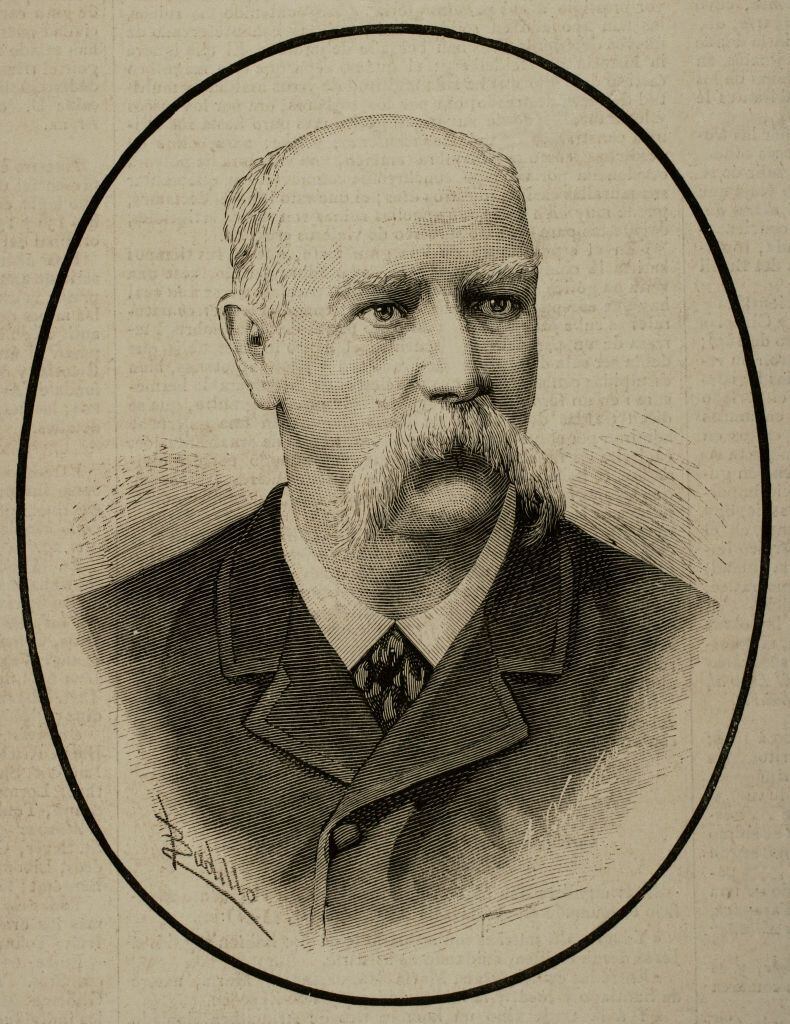
In parallel, anti-colonial sentiment in Cuba, mainly in the east of the country, was in full swing.
The island has been calling for political, social and economic reforms for decades that were constantly dismissed from Madrid.
This generated a national conscience that considered the creation of a sovereign state increasingly necessary to overcome many of the island’s problems.
“From United States, Mackenna came into contact with Cuban independence exiles and he supported the creation of the Republican Board of Cuba and Puerto Rico to promote the independence of both islands, ”says historian Zanetti to BBC Mundo.
The Voice of America
One of Mackenna’s main weapons to encourage the armed struggle in Cuba was the creation of the newspaper La Voz de América.
The first issue was published on December 21, 1865 and had “the explicit objective of fighting for the American union, make Cuba and Puerto Rico independent and defend the interests of Chile and Peru during the war conflict with Spain ”, according to the website of the Benjamin Vicuña Mackenna National Museum in Chile.
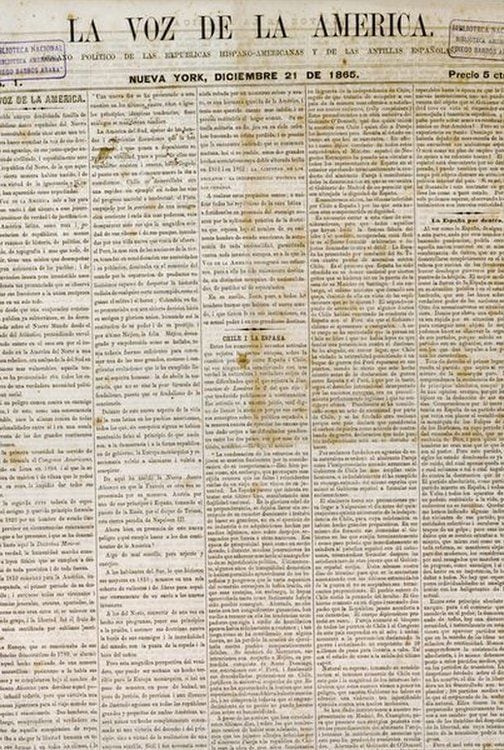
According to this institution, Vicuña Mackenna corrected the printing tests and ordered the distribution of some 2,000 copies of each print run.
Most, about 1,000, were sent to Cuba, another 200 to Chile, and the rest to Spanish-American legations based in Washington.
Open calls for insurrection prompted the Spanish government to ban the circulation of this newspaper.
In one of its numbers you could read: “The honor of redemption has come for you! Rise up as one man and you will be only the vanguard of America! “
“This newspaper was distributed clandestinely in Cuba and in some of its issues there appears a drawing with a condor whose claws hold the Chilean flag while Spaniards attack the island,” says Guerra.

Beyond a newspaper
Vicuña Mackenna also requested funds from the Chilean government to finance an armed company and organize an independence army.
The diplomat was confident that an uprising in Cuba was the most effective way to attack Spain and that the end of the Spanish presence in the Antilles would open new trade routes for European and American nations.
His idea was that an expedition would start from Callao in Peru, cross the Isthmus of Panama and disembark in Santiago de Cuba, to the east of the island.
Unfortunately for Mackenna, explains the National Museum, these requests did not materialize, and in 1866 the Chilean administration requested his return.
In total, he spent ten months on mission in the United States.
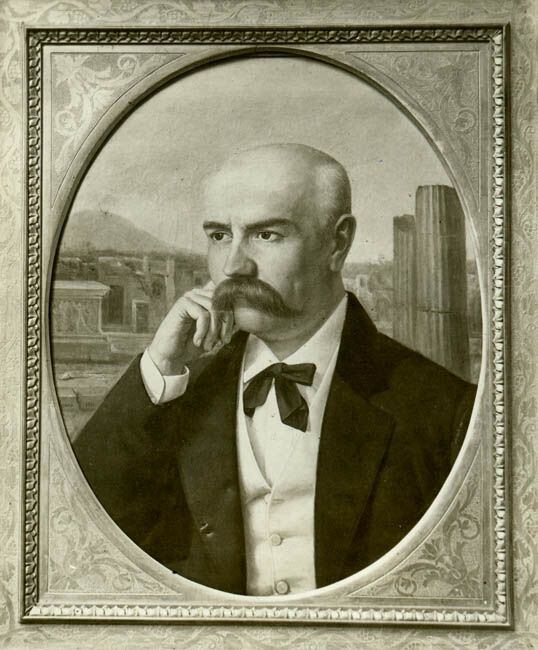
According to historians, the independence efforts did not bear fruit because of the guidelines of the international policy of the United States and because the Chileans never offered their money.
“USA. disavowed the expedition and, on the other hand, the war between Chile and Spain was over, peace was signed and the project associated with Chile eroded a bit”Says Guerra.
Although Vicuña Mackenna’s mission did not have the expected scope, the Cuban independence process continued and on October 10, 1868 the island took up arms against Spain.
Almost identical flags
In the summer of 1868 the independence conspiracy in Cuba was mature enough to organize an uprising, although there were disagreements about when was the best time.
But in October of that same year, news of the impending uprising began to spread.
So, in the area of the current province of Granma, the regional head of the conspirators, the lawyer Carlos Manuel de Céspedes, went ahead and started the independence war.
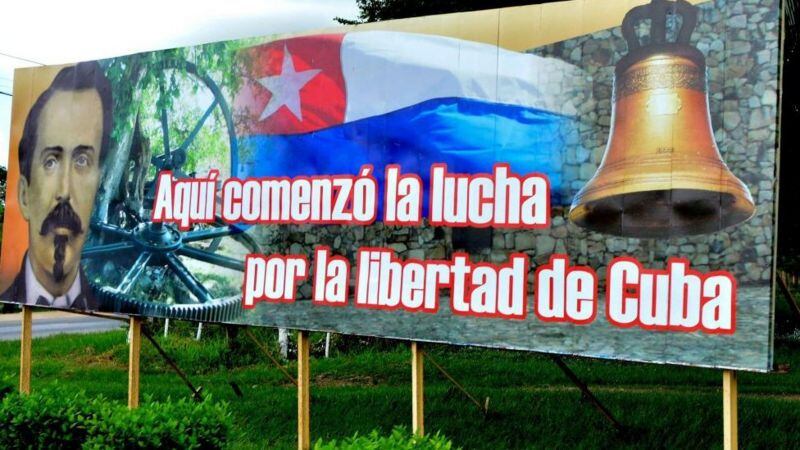
The flag that Céspedes adopted was exactly the same as that of Chile, but with the red and blue colors reversed.
“Céspedes and other conspirators in Cuba were aware of Vicuña’s efforts and received the encouragement of his promoters. Hence when they take up arms they will adopt a national flag equal to that of Chile, but with the colors reversed ”, explains Zanetti.
“Chile was one of the Latin American countries that recognized the belligerence of the Cuban patriots against Spain. For this reason, Carlos Manuel de Céspedes sent a letter to the President of Chile, José Joaquín Pérez Mascayano, thanking him for the recognition and support given to the cause of Cuba, ”Guerra completes.
Currently, the official flag of Cuba is different. It consists of a red triangle with a star inside and five stripes, three blue and two white.
Nevertheless, Céspedes’ flag is recognized as a symbol of Cuban emancipation and presides alongside the official multiple political and cultural events.

Frustrated process
The war started by Céspedes lasted until 1878.
The conflict ended in the Pact of Zanjón, when the two sides, exhausted and weakened, signed a provisional peace that would last until 1895.
On February 24 of that year, a new Cuban conspiracy led by the intellectual José Martí and the veterans of the 1968 war Antonio Maceo and Maximiliano Gómez once again took up arms against the Spanish metropolis.
That conflict would fulfill its objective, and with the help and intervention of the United States managed to end Spanish rule on the island in 1898.
But this time Chile stopped openly supporting the Cuban cause.
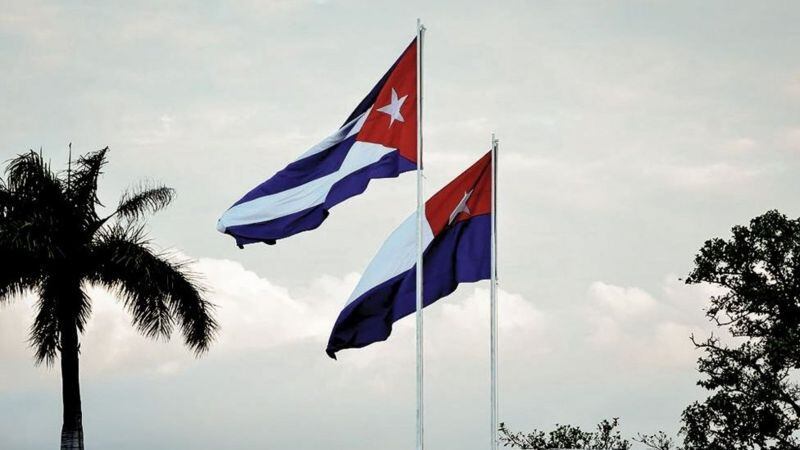
“With relations with Spain restored, in the 1995 war there were even sectors within the Chilean elite that were opposed to independence. At that time, Chile was facing the United States and it saw that the Cuban independence activists were under North American influence and, therefore, preferred to support Spain, ”explains Guerra.
Nevertheless, in the war of 95 several young Chileans joined the fight against Spain.
One of them, Pedro Vargas Sotomayor, even became a brigadier general. He subsequently died in combat in November 1896.
Cuba recognizes the Chilean influence in its cause, and even today highlights the “feelings of solidarity, internationality and fraternity” that in recent history have given continuity to the “emancipatory process that encompasses all of our America in achieving true and definitive independence.” it is read on the page of the Ministry of Foreign Relations of Cuba.
___________________________________
- Mauricio Leal: the famous stylist and his mother die in strange circumstances in Colombia; this is what is known
- The nightmare of the school that won the draw for the presidential plane of Mexico
- He arrived at the hospital with a fever, fatigue and flu, they gave him two years to live and 13 years later he lives to tell the tale
- To try to save his son, who is unlikely to live, a father develops a laboratory at home
- Lifeless body of renowned model Christy Giles was thrown in front of a Los Angeles hospital
- “Who gets vaccinated, wins”: Austrian public television raffles cars and houses to promote vaccination against coronavirus
.

:quality(75)/cloudfront-us-east-1.images.arcpublishing.com/elcomercio/MLPCHMJXOVEPTEWSGYOX3XH2C4.jpg)


:quality(75)/cloudfront-us-east-1.images.arcpublishing.com/elcomercio/YZRU25P7TNGKZIHA7E75XX55PI.jpg)

:quality(75)/cloudfront-us-east-1.images.arcpublishing.com/elcomercio/ABQQVJAO7NAF7LUY7DXSRIKWSY.jpg)
